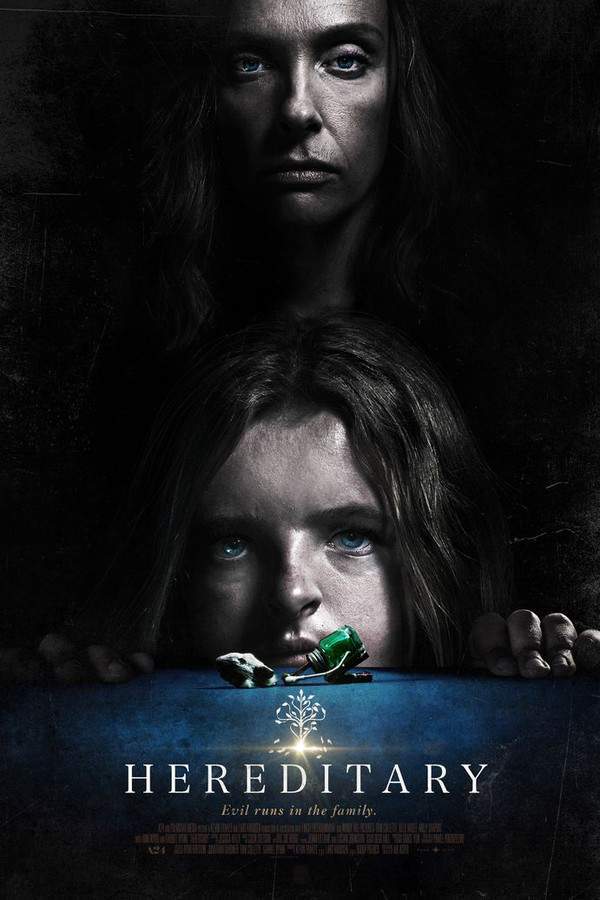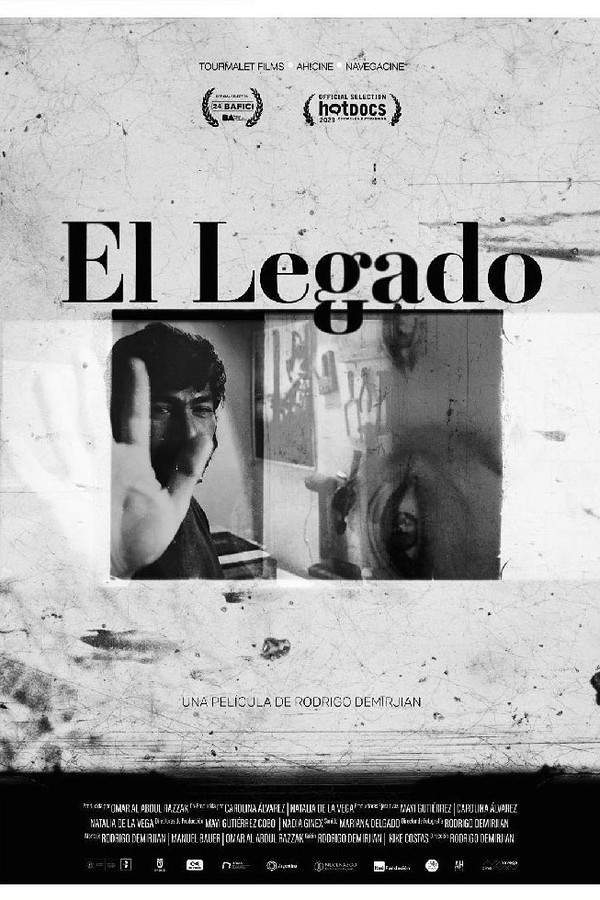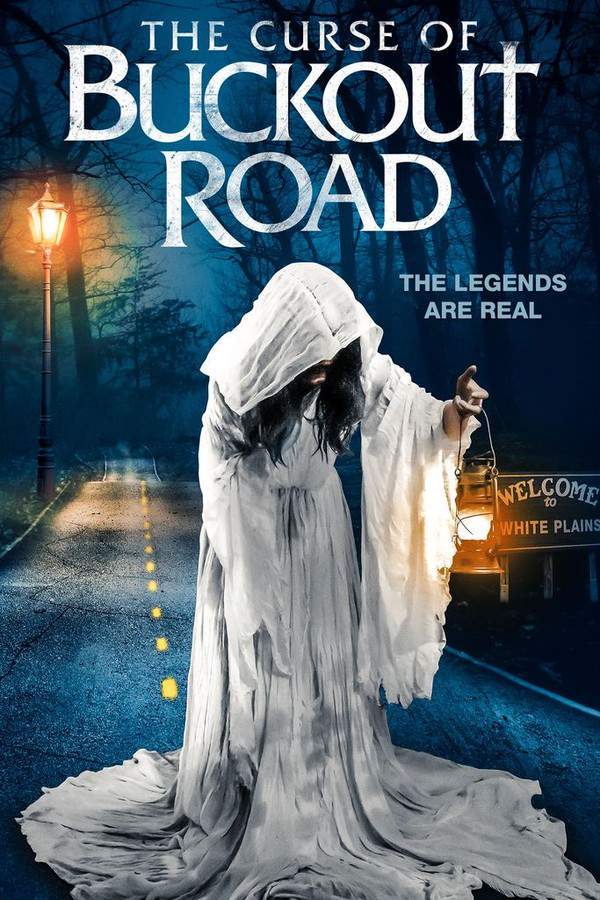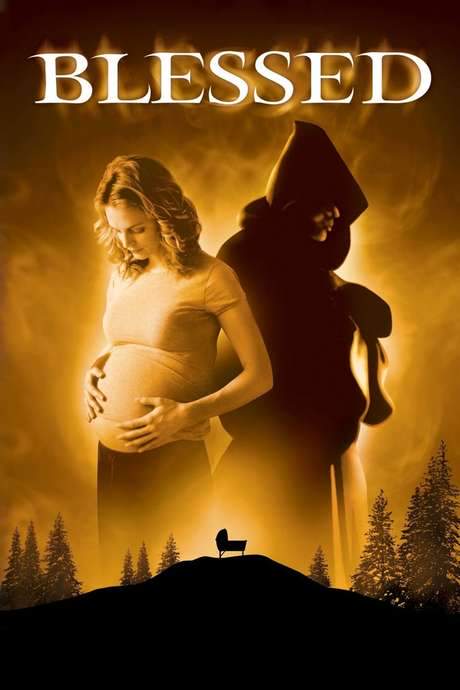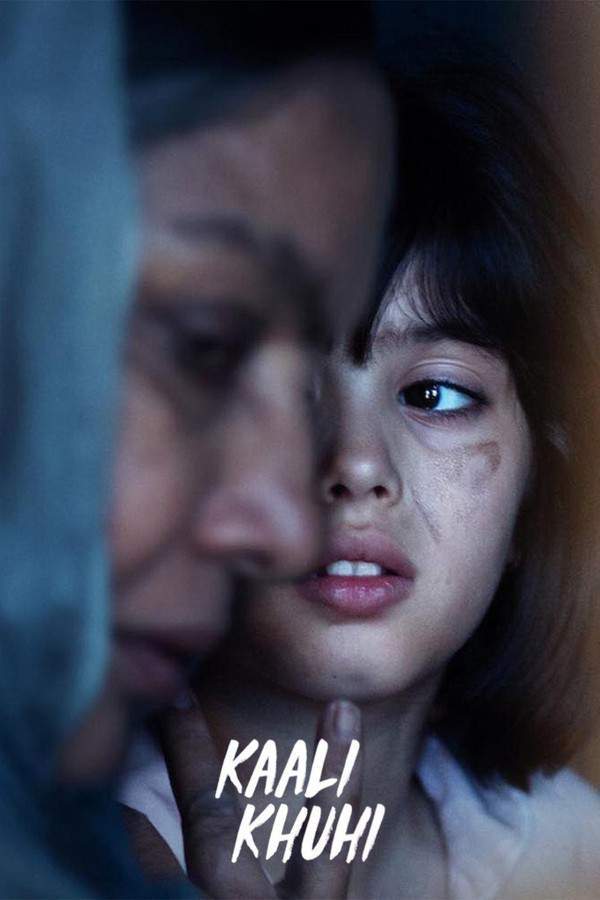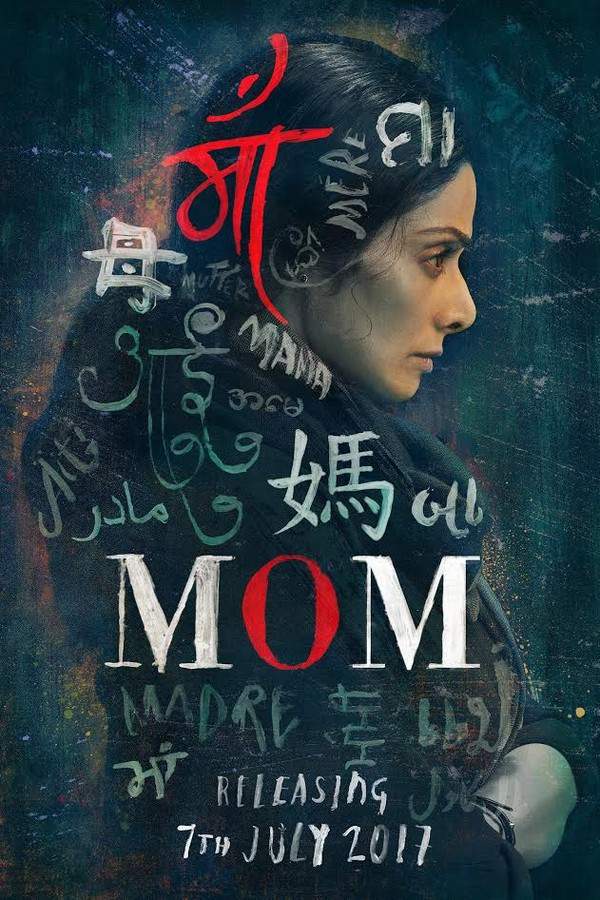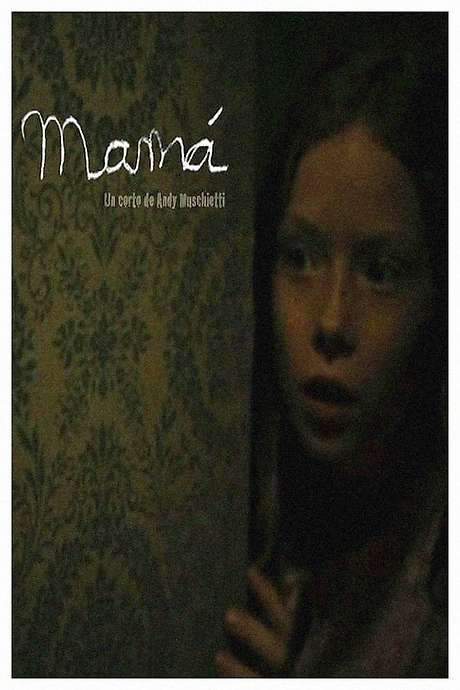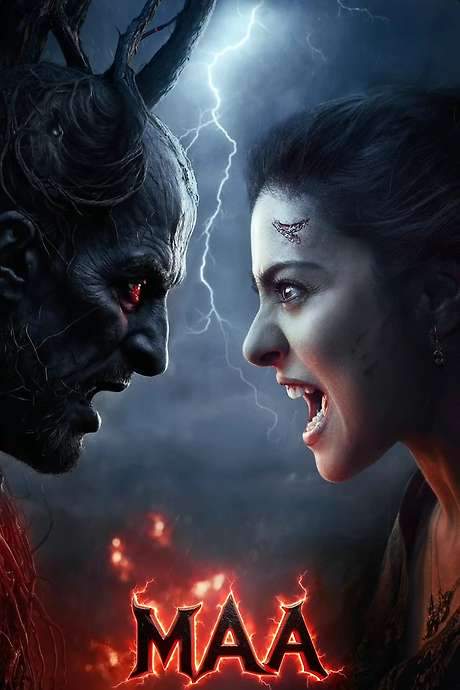
Maa
Hell is here, so is the goddess. A mother and daughter encounter a demon in a village where girls have been disappearing.
Warning: spoilers below!
Haven’t seen Maa yet? This summary contains major spoilers. Bookmark the page, watch the movie, and come back for the full breakdown. If you're ready, scroll on and relive the story!
Maa (2025) – Full Plot Summary & Ending Explained
Read the complete plot breakdown of Maa (2025), including all key story events, major twists, and the ending explained in detail. Discover what really happened—and what it all means.
During Kali Puja at a secluded ancestral mansion in Chandrapur, Ambika, Kajol, brings twins into the world—a boy and a girl. The rite is conducted by a woman priestess who claims Kali spoke to her in a dream, lending an eerie gravity to the proceedings. Joydev, Ronit Roy, a local figure of authority who grows up alongside the ritual, watches with his friends and notes that the son of the sarpanch should be the one to lead the puja. The second newborn is announced to be a girl, and a tense moment follows as the father, the scion of the zamindar family, seizes the infant from the new mother to take her for a sacrificial rite. The priestess advances the sword toward the baby, but Kali’s demand is clear—the goddess cannot ask for a baby girl’s sacrifice. In a shocking turn, Joydev snatches the sword from the priestess, asserts it as his right, and sacrifices the girl himself, sinking the ceremony into a silence heavy with unspoken fear.
Forty years pass, and Ambika lives in Kolkata with her husband Shuvankar, Indraneil Sengupta, and their twelve-year-old daughter Shweta, a life that feels outwardly content yet is haunted by a hidden family truth. Shuvankar is the same son who had the female twin long ago, a fact that has always hovered between concealment and revelation. He wrestles with the dilemma of when—or if—to tell his daughter the truth about her lineage and the shadow that still lingers over their family estate. The family’s quiet existence is disrupted when Joydev, now an older man and still a central village figure, sends word that his father has died. The news pulls Shuvankar toward Chandrapur to oversee the cremation and the sale of the ancestral property, a plan Ambika initially opposes but gradually considers to secure their future.
On the return journey, Shuvankar dies in a mysterious fire—an accident that seems to be caused by a splinter from the roots of the same haunted tree behind the palatial house, a tree tied to the earlier tragedy. The splinter lodges in his shoe, and as the flames engulf the vehicle, Ambika and Shweta travel to Chandrapur to complete the sale and confront the living memory of the past. In Chandrapur, Shweta befriends Deepika, the caretaker’s daughter, and the two begin to explore the area around the haunted tree, despite warnings that a demon—or daitya—might dwell there. When Shweta insists on visiting the tree, Ambika intervenes, only to learn that Deepika has just had her first period, a detail that coincides with rumors of the daitya’s influence drawing girls away and returning them unharmed.
The disappearances grow more alarming as several village girls vanish after their first menstruation, then return without their cycles, prompting Ambika to dig deeper. A seasoned police officer, Sarfaraz, becomes involved, convinced that the rumors of a demon mask a more human series of machinations. The investigation bears fruit when a manuscript—belonging to Shuvankar’s father’s generation—lands in Ambika’s hands through the old caretaker and caretaker’s son. Reading it, she uncovers a centuries-old curse centered on a blood daitya named Aamsaja, a being tied to the Kali Puja rite and the haunted tree. The demon is revealed to be after Shweta, aiming to procreate through her, and Ambika must act to shield her daughter and the other missing girls.
As the truth comes to light, Joydev’s role becomes horrifyingly clear: he is the human face of the daemon Amsaja, the malevolent force behind the century-old curse. Ambika, now confronted with a choice steeped in ritual and survival, experiences a prophetic dream of Goddess Kali. Guided by that vision, she resolves to perform Kali Puja in the family temple, a temple that unlocks only when a village dream connects with the goddess. With the demon’s influence growing ever stronger inside Joydev, Ambika undergoes a dramatic transformation, channeling Kali’s wrath and becoming a fierce matriarchal protector who fights to save Shweta and the abducted girls.
The battle culminates in a tense confrontation where the demon is driven back, and the immediate danger to Shweta is averted. Yet a grim twist remains: an ancient priestess reveals that Shweta carries the demon’s potential birth, and thus a sacrifice would be required to stop it. Ambika faces the unbearable choice, preparing to sacrifice her own daughter for the greater good. Just as she braces for the ritual, the priestess intervenes, declaring that Goddess Kali has tested her and that the threat within Shweta is no more. The revelation marks a fragile victory, a moment of relief that comes with the acknowledgment of a long, painful history finally addressed.
In the final moments, the story lingers on the aftermath of the ordeal. The forest around Chandrapur bears the scars of the ordeal, and a post-credits scene shows Vanraj, wearing a hoodie and boots, walking through the ashy remains of the once-haunted land, seemingly absorbing what remained of Amsaja’s powers. The film closes on a note of unresolved tension, a reminder that the legacy of blood and ritual can echo through generations, reshaping lives and testing the limits of family loyalty, faith, and courage.
Last Updated: October 07, 2025 at 08:16
Ending Explained – What Happens at the End of Maa?
Still wondering what the ending of Maa (2025) really means? Here’s a spoiler-heavy breakdown of the final scene, major twists, and the deeper themes that shape the film’s conclusion.
In the climax Ambika confronts the ancient evil that has haunted Chandrapur for centuries. After learning that the demon Amshaja has been reborn in the village chief’s son Joydeep, she taps into the power of the goddess Kali during a desperate ritual. The divine force razes the cursed forest and turns the demon into ash, ending Amshaja’s reign of terror. Yet Joydeep has already forced himself on Ambika’s young daughter Shweta, leaving her pregnant with the demon’s child.
With the demon vanquished, Ambika faces the same impossible choice that the original devotee of Kali once did: let the unborn child live and risk the world’s destruction, or end her daughter’s life to protect everyone. As she hesitates, the spirits of the countless infant sacrifices rise from the earth, converging with Kali’s presence above the village. The priestess, acting as the goddess’s mouthpiece, tells Ambika that the true teaching of Kali was never a command to kill one’s own child; the old patriarchs had twisted the doctrine to justify endless femicide. Recognizing this, the divine power grants Shweta a miraculous abortive release, sparing her life and erasing the demon’s seed.
The film closes with Ambika’s victory over the immediate threat, the villagers liberated from the demon’s grip, and a hint that the battle against darkness continues—an ancient ash of Amshaja is later found by an outside force, suggesting that while one evil has been crushed, the wider struggle remains. The ending thus reinterprets Kali’s myth, condemns the patriarchal misreadings that perpetuated cruelty, and affirms a woman’s right to choose her own fate.
Last Updated: August 19, 2025 at 19:40
Explore Movie Threads
Discover curated groups of movies connected by mood, themes, and story style. Browse collections built around emotion, atmosphere, and narrative focus to easily find films that match what you feel like watching right now.
Dark ritual horror movies with generational curses like Maa
Ancient family sins resurface in stories steeped in ritualistic dread.If you enjoyed the oppressive dread and ancient family curse in Maa, explore similar horror films. These movies feature ritualistic terror, supernatural entities tied to lineage, and a heavy, atmospheric tone. Discover more movies like Maa that explore the horror of inherited sin.
Narrative Summary
Stories in this thread typically follow characters, often a parent or heir, who uncover a terrible secret from their family's past. This revelation explains a current supernatural threat, forcing a confrontation with an ancient entity or curse through a ritual or sacrifice to break the cycle, often at a great personal cost.
Why These Movies?
Movies are grouped here for their shared focus on generational trauma manifesting as supernatural horror. They create a coherent experience through a consistently dark tone, high emotional weight, and the central theme of confronting a cursed inheritance, resulting in a tense and oppressive viewing experience.
Maternal horror and sacrifice movies similar to Maa
Stories where a mother's love is tested by unimaginable supernatural threats.For viewers who liked the themes of motherhood and sacrifice in Maa, this collection features horror stories centered on a mother's fight to save her child. Explore similar films with high emotional stakes, dark themes of protection, and heavy supernatural threats. Find more movies like Maa about maternal horror.
Narrative Summary
The narrative pattern revolves around a mother who discovers her child is the target of a demonic force or a cruel destiny. The plot is driven by her desperate investigation and escalating fight against this evil, culminating in a confrontation where she must risk everything, resulting in a bittersweet or costly victory.
Why These Movies?
These films are united by the powerful theme of maternal sacrifice in the face of horror. They share a high emotional weight due to child endangerment, a consistently dark and anxious tone, and a similar narrative structure where a parent's love is the ultimate weapon against darkness.
Unlock the Full Story of Maa
Don't stop at just watching — explore Maa in full detail. From the complete plot summary and scene-by-scene timeline to character breakdowns, thematic analysis, and a deep dive into the ending — every page helps you truly understand what Maa is all about. Plus, discover what's next after the movie.
Maa Timeline
Track the full timeline of Maa with every major event arranged chronologically. Perfect for decoding non-linear storytelling, flashbacks, or parallel narratives with a clear scene-by-scene breakdown.

Characters, Settings & Themes in Maa
Discover the characters, locations, and core themes that shape Maa. Get insights into symbolic elements, setting significance, and deeper narrative meaning — ideal for thematic analysis and movie breakdowns.

Maa Ending Explained
What really happened at the end of Maa? This detailed ending explained page breaks down final scenes, hidden clues, and alternate interpretations with expert analysis and viewer theories.

Maa Spoiler-Free Summary
Get a quick, spoiler-free overview of Maa that covers the main plot points and key details without revealing any major twists or spoilers. Perfect for those who want to know what to expect before diving in.

More About Maa
Visit What's After the Movie to explore more about Maa: box office results, cast and crew info, production details, post-credit scenes, and external links — all in one place for movie fans and researchers.

Similar Movies to Maa
Discover movies like Maa that share similar genres, themes, and storytelling elements. Whether you’re drawn to the atmosphere, character arcs, or plot structure, these curated recommendations will help you explore more films you’ll love.
Explore More About Movie Maa
Maa (2025) Scene-by-Scene Movie Timeline
Maa (2025) Movie Characters, Themes & Settings
Maa (2025) Ending Explained & Theories
Maa (2025) Spoiler-Free Summary & Key Flow
Movies Like Maa – Similar Titles You’ll Enjoy
Kaali Khuhi (2020) Full Movie Breakdown
Mama (2013) Movie Recap & Themes
Matriarch (2022) Film Overview & Timeline
Mom (2025) Complete Plot Breakdown
Daughter (2002) Ending Explained & Film Insights
Love from Mother Only (2003) Ending Explained & Film Insights
Bandh Darwaza (1990) Story Summary & Characters
Mausoleum (1983) Ending Explained & Film Insights
Purana Mandir (1984) Detailed Story Recap
Welcome Home (2020) Film Overview & Timeline
Maa Oori Polimera (2021) Plot Summary & Ending Explained
Love You, Mama (2022) Spoiler-Packed Plot Recap
Exorcismo (1975) Complete Plot Breakdown
Shaitaan (2024) Plot Summary & Ending Explained
Mamá (2008) Plot Summary & Ending Explained


